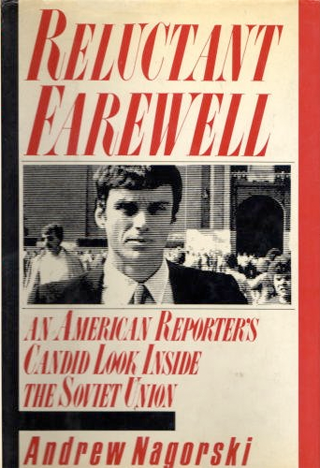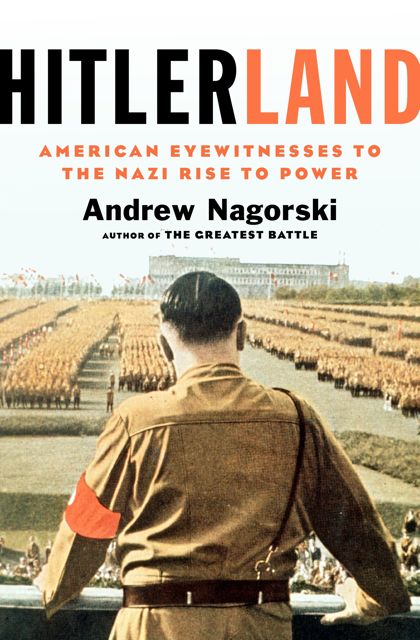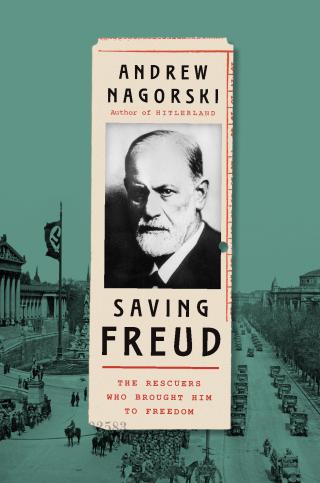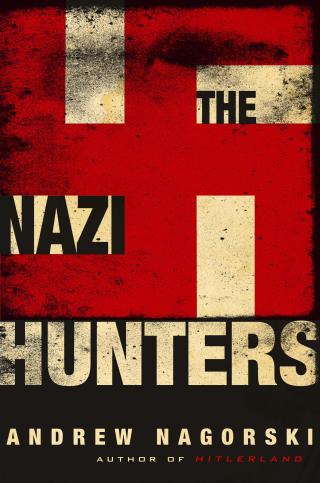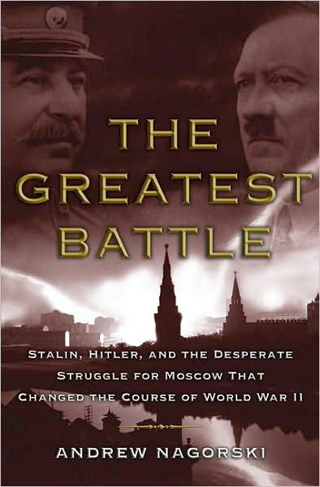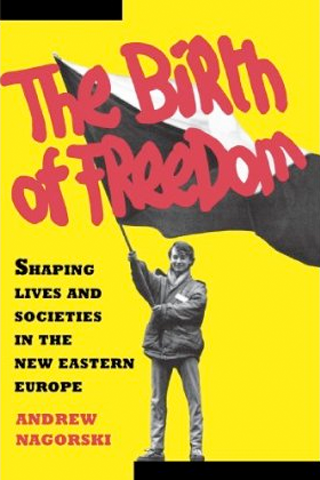On the evening of May 10, 1960, the day before the planned Israeli kidnapping of Adolf Eichmann, Mossad chief Isser Harel gathered his team of agents in Buenos Aires. He told them they were “chosen by destiny” to seize the man who was known as the architect of the Holocaust, the mastermind who organized the trains that delivered millions of victims to Auschwitz and other concentration camps. “For the first time the Jews would judge their assassins,” he declared, since the plan included smuggling Eichmann out of Argentina to Jerusalem, where he would be tried and condemned to death.
In the new movie Operation Finale that message is delivered directly to the team by Prime Minister David Ben-Gurion before the agents leave Israel for Argentina, one of the many alterations in the events depicted on screen. But compared to earlier fantasy blockbusters about Nazi hunting like The Boys from Brazil and Marathon Man and several TV movies, this new entry represents a serious effort to reconstruct the most famous kidnapping of the modern era. At the same time, it can’t resist adding some flourishes that amount to dramatic overkill.
It may be a cliché, but fact often is stranger than fiction—and, in the Eichmann case, this was particularly true. I discovered as much when I interviewed Rafi Eitan, the commander of the operation, and his deputy Avraham Shalom in Tel Aviv in 2014 while working on my book The Nazi Hunters. Thinking back on their accounts along with the memoirs provided by members of the team who died earlier, I can’t help wonder why Hollywood has never understood that the most dramatic tale would be the one that adhered most closely to the facts.
Take, for example, the extent to which the popular perception that the Mossad was chasing Nazis everywhere was off the mark. Operation Finale at least includes a scene where Mossad chief Harel explains that the present—meaning the existential threats Israel faced from the earliest days of its existence—has to be his top priority, which was why he was initially reluctant to attach much credence to the tip he received about Eichmann. But the film then conveys the impression that all skepticism was quickly swept away in the fervor to nab him.
As Eitan, the agent Harel tapped to lead the operation, told me, the Mossad had focused far more attention up to that point on trying to identify spies planted by the KGB and other Eastern bloc security services among the new arrivals in Israel. The new state needed the influx of settlers, but the Mossad knew that such agents were relaying back intelligence that Moscow and its proxies were quick to pass on to their Arab allies. “This was the first priority—not capturing Nazis,” he said. Shalom, his deputy on the Eichmann operation, was even more blunt. “I was never interested in Nazi hunting as such,” he admitted.
Those attitudes contributed to some of the initial doubts about the sighting of Eichmann. In the film, the key tip is relayed by Fritz Bauer, a West German Jewish prosecutor who did not trust his own government to act on it, and very quickly the Mossad confirms his information and springs into action. In reality, Bauer made his first contact with an Israeli official in Germany on September 17, 1957, which meant that it took more than two years for the kidnapping plot to be set in motion.
During that period, Israeli leaders began to feel more confident about the strength of the new state—and more worried about how quickly the world seemed to be forgetting about the Holocaust. After the Nuremberg and other trials, the advent of the Cold War had meant that the victorious powers largely lost interest in bringing more war criminals to justice. Besides, those early trials rarely gave a chance for survivors to testify. Ben-Gurion believed that if Eichmann could be seized and tried, the world would be forced to learn the lessons of the Holocaust.
Ben-Gurion was equally worried about the attitudes of young Israelis. Gabriel Bach, the only surviving member of the prosecution team in the Eichmann case, explained that teachers had been complaining that their students did not want to hear about the Holocaust. “Why? Many of our young people were ashamed,” he told me. “A young Israeli can understand that you can be hurt fighting, that you can be killed fighting, but he cannot understand how millions of people let themselves be slaughtered without an uprising.”
The trial would change those attitudes by showing young Israelis how the victims “were misled up to the last moment,” Bach continued, and how “when it was clear to the Jews that death was waiting, like with the Warsaw Ghetto, they fought to the last man in an incredibly courageous manner.” Survivors would be able to tell their emotional stories in gruesome detail.
Bauer had received his information about Eichmann from Lothar Hermann, a blind German Jew living in Argentina with his German Christian wife and daughter Sylvia. They were accepted as part of the German community there. When Sylvia began dating a young man named Nicolas Eichmann, her father soon figured out that he was likely to be the son of the wanted war criminal. Amazingly, the elder Eichmann had changed his name to Ricardo Klement, but he had not insisted that his sons follow suit. More than a decade after the war, most Nazis who had not been executed or tried in Nuremberg or elsewhere felt increasingly confident that they were home free.
When Harel first sent an agent to Buenos Aires to check out Hermann’s story, he was thrown off by the fact that Eichmann purportedly lived in an impoverished area, the street was unpaved, and, as Harel put it, “the wretched little house could in no way be reconciled with our picture of the life of the SS officer of Eichmann’s rank.” At the time, the common assumption was that Nazi criminals had smuggled out the vast wealth they had seized from their victims. The agent was also thrown off by the slovenly appearance of the European woman whom he spotted in the yard. Eichmann had been known as a womanizer, and he couldn’t believe this was his wife.
In the film, the Mossad arranges for Sylvia Hermann to revisit the Eichmann house to try to get a positive identification. That much was true. Eventually the evidence grows that Hermann and his daughter have spotted the right man. But, for dramatic effect, the film version has Nicolas Eichmann dragging Sylvia to a Fascist meeting in Buenos Aires that has all the earmarks of a Nazi rally with Eichmann senior as a star guest; she then runs out on him, and later acknowledges that she is Jewish.
None of that happened. Eichmann may have been casual about maintaining appearances, but he still kept a low profile. And Sylvia was not about to tell his son about her family background. In fact, keeping that a secret was more of a drama than the fictional one.
The kidnapping itself is portrayed fairly accurately. As Eichmann stepped off a bus after returning from his job in a Mercedes factory, the team was ready. Peter Malkin, the strongest member of the group, was assigned the job of grabbing Eichmann first. “Never before in my career had I even been a little frightened,” he wrote much later. “Now I was terrified of failure.” The agents knew it would be easy to kill their quarry, but much harder to capture and keep him alive to get him out of the country.
Malkin wore fur-lined gloves when he prepared to carry out his task. “The thought of placing my bare hand over the mouth that had ordered the death of millions, of feeling his hot breath and saliva on my skin, filled me with an overwhelming sense of revulsion,” he recalled.
The two men tumbled into a ditch when Malkin lunged for Eichmann, and Eichmann began screaming. The other Mossad agents rushed up and pulled him into one of the two waiting cars. They then put him on the floor between the front and back seats and covered him with blankets. One of the agents delivered a sharp order to Eichmann in German: “If you don’t keep still, you’ll be shot.” Eichmann, who was by then outfitted in opaque goggles so he could not see anything, nodded, indicating that he understood. From then on, he was completely still.
At the safe house where the agents took him, Eichmann at first insisted that his name was Ricardo Klement. But when his Mossad interrogator asked him his height, shoes size and other details, they matched the records. So did his answer to the questions about his Nazi Party membership and SS numbers. At that point, he admitted his true identity.
As a prisoner, Eichmann was more abject than his portrayal on screen by Ben Kingsley. “He behaved like a scared, submissive slave whose one aim was to please his new masters,” Harel wrote. Malkin called him “a classic weakling, lacking the character to accept his fate.” But it is true, as the film shows, that Malkin ended up engaging him in conversations that were at time bizarrely mundane, foreshadowing the debates about philosopher Hannah Arendt’s concept of “the banality of evil” that she espoused in her coverage of the trial in Jerusalem.
During the time that the Mossad team held Eichmann in the safe house, they were waiting for the arrival of a special El Al flight from Israel. There were no regular flights between the two countries at the time, and the Israelis used the pretext of sending a high-level delegation to attend the celebration of the 150th anniversary of Argentina’s independence to get their prisoner out. In the film, this was a time of peril, when Argentine Fascists, led by Eichmann’s son, and the local police are madly searching for him, with several close calls.
The reality, again, is a bit more complicated. The Eichmann family did not dare to alert the Argentine authorities about his disappearance because that would have meant admitting his identity. While the Argentines had largely turned a blind eye to the Nazi war criminals in their midst, the government did not want to be embarrassed by such revelations. Eichmann’s son did manage to enlist some local fascists to look for his father, but they were not part of any official law enforcement action.
What Eitan and the other agents feared most was that they would be caught in a chance roadblock or merely for a traffic violation. As Eitan told me, Harel had given him a pair of open handcuffs, keeping the key for himself. If the Argentine police should catch up with them, he told him, he should handcuff his hand to Eichmann’s and then demand to see the Israeli ambassador. That was supposed to ensure that the two would not be separated.
Eitan took the handcuffs. But keeping this from Harel, he made a pact with one of his agents, Zvi Aharoni, to kill Eichmann if it came to that. Luckily, they were not stopped on the way to the airport to board the flight, with the whole team posing as crew members. They also had dressed Eichmann in an El Al uniform. They drugged him to be sure he didn’t try anything, but that was hardly necessary. He assured them he would continue to cooperate, even pointing out before the drug started working that they had forgotten to put on his jacket.
When they passed through the airport gate, Eichmann looked like a crew member recovering from a bad hangover. Eichmann’s reckoning in Jerusalem was about to begin.


